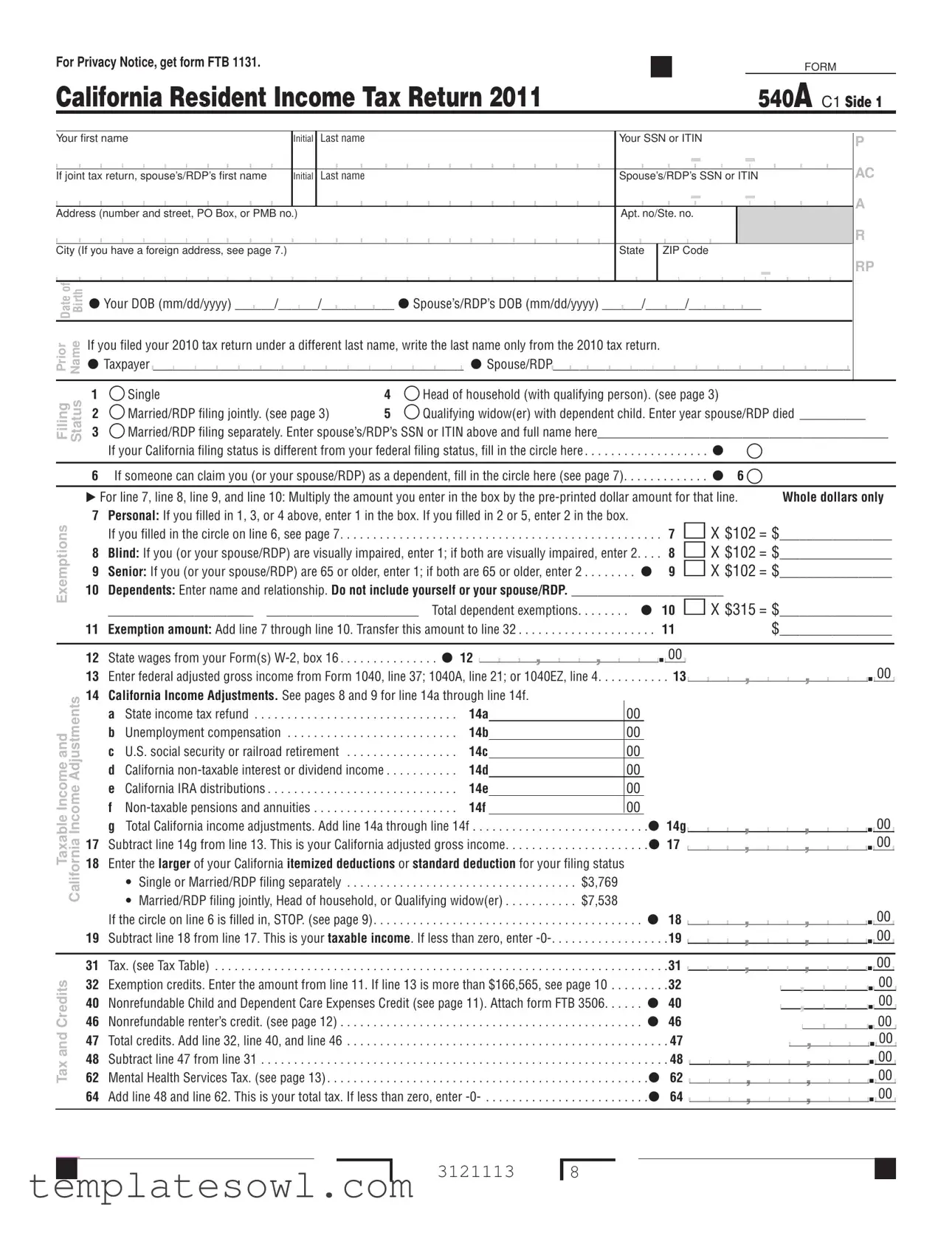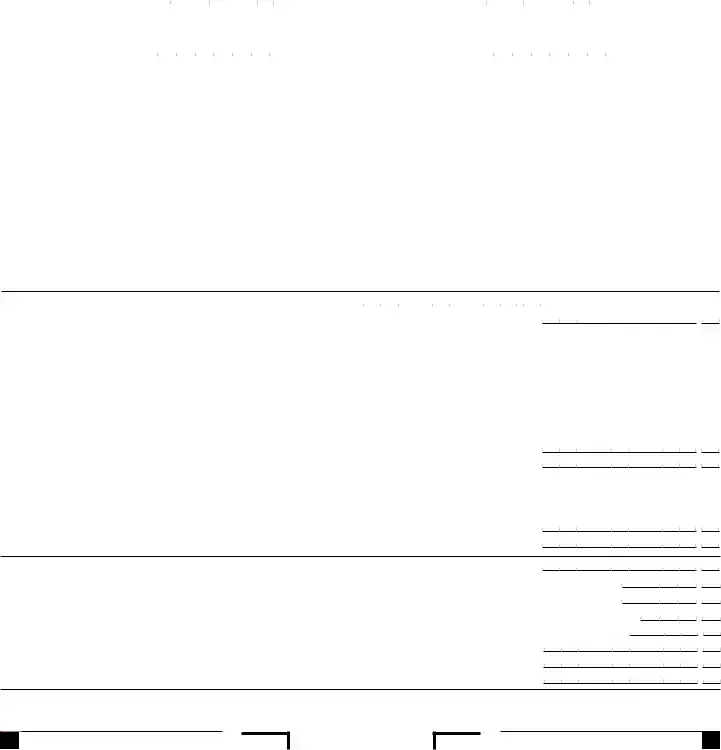What is the 540A form used for?
The 540A form is the California Resident Income Tax Return specifically designed for use by individual taxpayers. It is primarily used to report income earned in California, calculate taxes owed, and claim any available credits or deductions. This form helps ensure that residents comply with state tax laws while providing essential information for tax evaluation.
Who should file the 540A form?
The 540A form is suitable for individuals or couples whose total income meets specific criteria and who can accurately file using a simpler form. Generally, if your federal adjusted gross income is below certain thresholds and you do not have complex tax situations such as itemizing deductions, you should consider filing this form. Individuals filing as single, married filing jointly, or head of household are typically eligible.
What information do I need to complete the 540A form?
To fill out the 540A form, you will need various pieces of information. This includes your personal identification details such as name, Social Security Number, and date of birth. Additionally, you should have your income details from W-2 forms, any applicable deductions, and information regarding your dependents. It is vital to have any documentation related to tax credits you plan to claim as well.
Can I file the 540A form electronically?
Yes, many taxpayers choose to file the 540A form electronically. The California Franchise Tax Board (FTB) allows e-filing through approved tax software, making the process more accessible and efficient. Electronic filing often leads to quicker processing times and may facilitate faster refunds when applicable.
What are the exemptions available on the 540A form?
The 540A form allows you to claim several exemptions. These include personal exemptions based on your filing status, as well as exemptions for being blind or over the age of 65. Moreover, you can claim exemptions for dependents. Each exemption reduces your taxable income, which may lead to a lower overall tax bill.
What happens if I cannot pay the tax owed?
If tax owed is beyond your current ability to pay, it is important to communicate with the California Franchise Tax Board. They offer payment plans and options that may assist in managing your tax obligations without incurring severe penalties. Taking proactive steps is crucial for maintaining compliance and minimizing financial repercussions.
How can I check the status of my 540A form after filing?
You can check the status of your filed 540A form by visiting the California Franchise Tax Board website. Using their online services, you will need to provide your personal information like your Social Security number and the amount of your expected refund or payment. This will allow you to obtain up-to-date information regarding the processing of your tax return.
What should I do if I made a mistake on my 540A form?
If you discover an error on your 540A form after submission, you can correct it by filing an amended return using Form 540X. It is essential to provide a clear explanation for the changes made. Filing an amended return ensures that your tax records are accurate and minimizes potential issues with the tax authority.
Where do I send my completed 540A form?
Your completed 540A form can be mailed to the Franchise Tax Board at the address listed on the form. For residents filing with a refund, the mailing address is P.O. Box 942840, Sacramento, CA 94240-0002. If you owe taxes, use the address provided in the instructions for payments. Ensure that you send your form in a timely manner to avoid unnecessary delays or penalties.



 ,
, 


